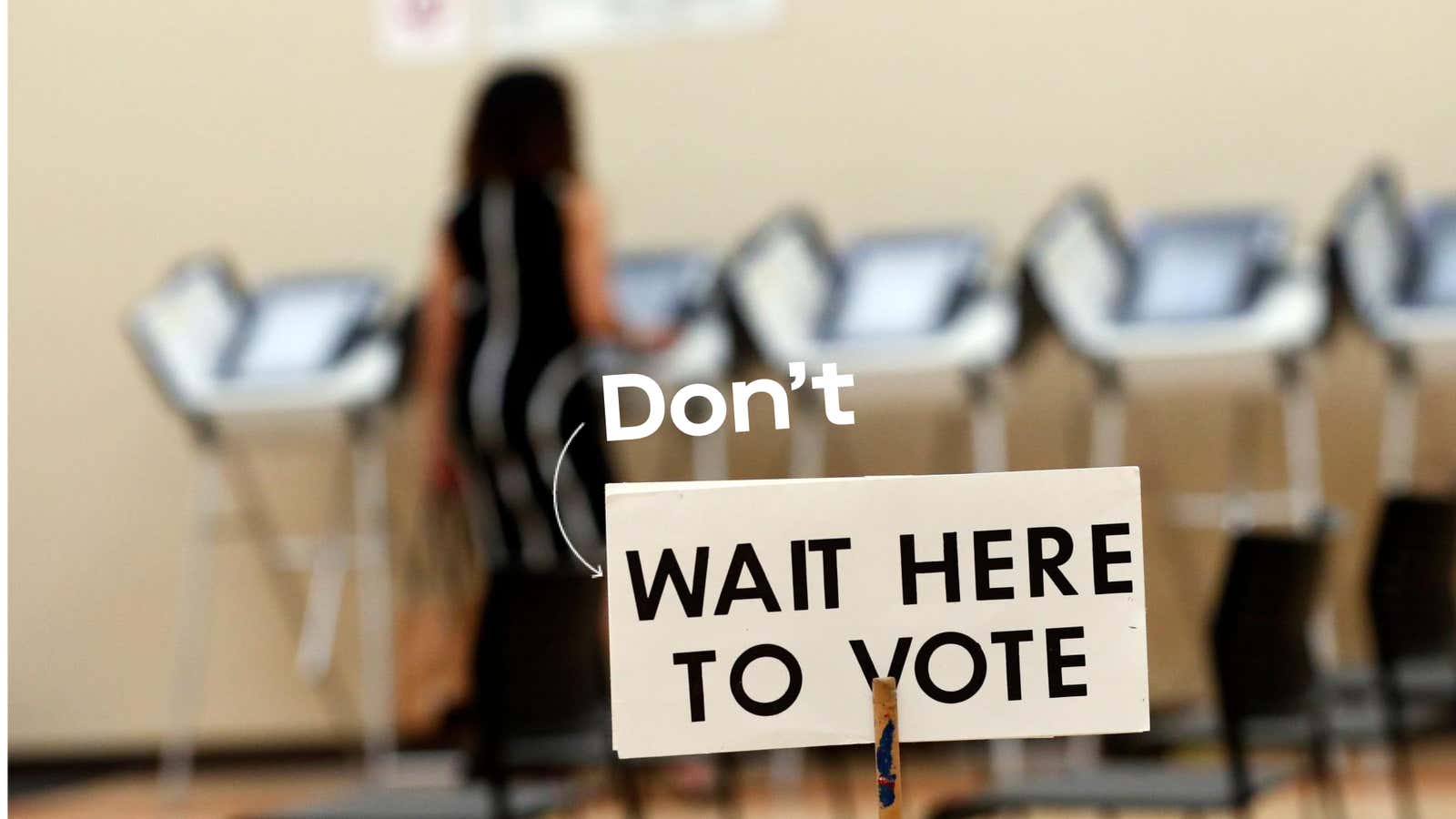When the United States was founded, all Americans had early voting. The practice was curtailed after 1845 when the federal government set a single election day, the familiar Tuesday after the first Monday in November. It was only when soldiers far from home in the Civil War needed a way to cast their ballots that the practice was revived.
Today, Americans of all stripes can vote when and from where they’d like. Since 2004, the share of Americans voting early has doubled to 40%, according to the US Election Assistance Commission, by requesting an absentee ballot, receiving all their ballots by mail, or in-person at a polling station.
This year’s heated midterm may have seen the most early votes in history. “I think when all is said and done, we’ll find this was a record number and percent of people who cast early votes in the mid-term elections,” says professor Michael McDonald of the University of Florida’s political science department.
At least 43 states now offer some version of “no-excuse” advance voting, either by mail or in-person, says McDonald (although definitions vary). Seven others require some form of excuse, such as military service, but most are lenient enough that even a Virginia commuter who drives to Washington DC for work qualifies for an absentee ballot.
California was among the first to embrace “no-excuse” absentee voting in 1980, and today about 60% of voters in the state cast a ballot by mail. Eight states in all allow voters to have ballots mailed to their homes for every election, and New York, New Jersey, and Michigan, which all approved voter reforms this election, may soon join their ranks.
McDonald says that’s a good thing. Citizens should have the right to cast ballots whenever they’re confident in their decision. It encourages campaigns to run longer voter mobilization efforts, divulge crucial information earlier in the contest rather than try to sway elections with last-minute disclosures, and of course shortens lines. As a bonus, registered voters often stop receiving campaigns’ phone calls and door knockers if they vote early.
The option may also boost turnout, at least a bit. Texas, for example, saw more people vote early this midterm (4,884,528) than voted in the entire 2014 election. While data on early voting’s effect on turnout isn’t definitive (too many confounding variables), McDonald believes it may add as much as a few percentage points to the total. With America’s elections increasingly decided by far less, participation in early voting can decide races from Congress to school boards.
Yet, like much in American life, early voting is now engulfed in partisan warfare. Until 2008, the idea of expanding the franchise was popular in both parties. Since then, the GOP’s shrinking demographic base means its electoral strategy has shifted to depressing voter turnout among groups less likely to vote for the GOP.
By the 2016 election, fourteen states had restrictive voting laws, most of them sponsored by Republican lawmakers, many targeting minorities. One of the most egregious was North Carolina’s Republican-sponsored voter ID law. Its restrictions targeted African Americans “with almost surgical precision,” federal judges wrote after striking the law down (paywall) in 2016. The court found that legislators used data on racial voting behavior to eliminate the first seven days of the state’s 17-day voting period since blacks (who tend of vote for Democrats) were more likely to use them. Black churches also hold “Souls to the Polls” events encouraging congregants to vote on Sundays after services. North Carolina GOP lawmakers had canceled Sunday voting under the law.
But early voting doesn’t inherently favor one party, says McDonald. While Republican-held states are generally looking to make it harder to vote, the data show either party can prevail with early voting. Older Americans, a generation that disproportionately favors the GOP, prefers to vote early, not just Democrat-leaning groups like women and minorities. McDonald believes Democrat’s perceived edge in early voting is the result of deliberate targeting of those voters, and Republican will benefit from the tactic.
After 2018, campaigns won’t have a choice but to go after early voters. In 16 states, more than half of voters cast their ballots early, by mail, or via absentee voting (at least 22 states allow it). It’s happening first in western states, but the arrival of early, absentee voting in the US looks inevitable.
US states show a consistent pattern when adopting the practice. After no-excuse absentee voting is approved, voters quickly embrace it until only a minority show up to vote on Election Day. Since voting by mail is cheaper, election officials then move to all-mail elections (while in-person voting is still permitted). Three states already do all their elections by mail with every registered vote receiving a ballot: Oregon, Washington, and Colorado. By 2020, California will allow it as well.
